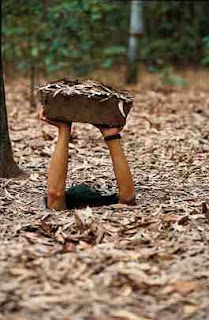“Be careful, your head”, the guide called over his shoulder as he shined his flashlight on me. “It is tight here. Also, be careful your back.” He nodded at my acknowledgement before turning forward to lead me hunched over through the narrow passageway. I was huddled in the infamous Cu Chi tunnels – a massive 75-mile underground maze of secret meeting rooms, sleeping areas, triages, kitchens, and wells where the Viet Cong lived and fought during the Vietnam War. These hand-carved tunnels are part of a larger network of passageways underlying much of Vietnam that has been used throughout history to conduct warfare
 against invading armies. People dropped into these tunnels through camoflaged entryways and would live down here for years, breathing the thin air and warding off poisonous snakes and scorpions. Guerillas protected the network above-ground with vicious booby traps and snares that showcased just how inhumane war can be. As I toured the compound, I was sobered by the thought that the Taliban’s operation in Afghanistan is probably just as complex and mortifying.
against invading armies. People dropped into these tunnels through camoflaged entryways and would live down here for years, breathing the thin air and warding off poisonous snakes and scorpions. Guerillas protected the network above-ground with vicious booby traps and snares that showcased just how inhumane war can be. As I toured the compound, I was sobered by the thought that the Taliban’s operation in Afghanistan is probably just as complex and mortifying.
After visiting Cu Chi, it was refreshing to take in the artistic beauty of the Cao-Dai Holy See Temple, the spiritual center of the Cao Dai faith. This broad religion includes elements of Buddhism, Christianity, Confucianism, and Islam, and its follower
s wear either white suits or colorful robes, each color denoting the root of Cao Daism they practice. I witnessed one of their meditation ceremonies and was left mesmerized by the singing chants, woodwind music, and drum gongs
that reverberated throughout the beautiful temple.
I’m looking forward to tomorrow’s meeting with Ms. Ngoc and her team from the HCM City National College of Education. From there, I meet up with my interpreter and head to Binh Duong province and the Thuan An Center where I will be spending the next several weeks.